
Reviews of Environmental Contamination and Toxicology
Scope & Guideline
Advancing knowledge in environmental health and toxicology.
Introduction
Aims and Scopes
- Pollutant Characterization and Behavior:
Research that explores the nature, sources, and behavior of various environmental pollutants, including heavy metals, microplastics, and pharmaceuticals. - Remediation Technologies:
Focus on innovative and sustainable approaches to remediate contaminated environments, including advanced treatment technologies and bioremediation strategies. - Ecotoxicology Assessments:
Studies that assess the ecological and health risks posed by contaminants, including their bioaccumulation, toxicity mechanisms, and effects on biodiversity. - Nanotechnology Applications:
Investigations into the use of nanomaterials for environmental remediation and their potential risks, particularly regarding engineered nanoparticles. - Impact of Climate Change on Contaminants:
Research examining how climate change influences the behavior and effects of environmental contaminants, especially in aquatic ecosystems.
Trending and Emerging
- Microplastics Research:
An increasing number of publications focus on microplastics, their sources, ecological impacts, and human health risks, reflecting growing global concern over plastic pollution. - Sustainable Remediation Techniques:
A trend towards exploring sustainable and innovative remediation technologies, including green chemistry and bio-based solutions, to address contamination challenges. - Health Impacts of Environmental Contaminants:
Emerging studies that link environmental contaminants to health outcomes, including neurodegenerative diseases and antibiotic resistance, are gaining prominence. - Nanotechnology in Environmental Applications:
Research into the application of nanotechnology for pollutant removal and treatment is on the rise, emphasizing both its potential benefits and associated risks. - Climate Change and Contaminant Dynamics:
An increasing focus on how climate change affects the behavior, transport, and toxicity of environmental pollutants, especially in aquatic systems.
Declining or Waning
- Traditional Chemical Assessments:
There is a noticeable decline in studies focused solely on conventional chemical assessments of pollutants, as the field shifts towards integrating nanotechnology and bioremediation approaches. - Historical Pollution Studies:
Research that primarily examines historical pollution sources and impacts is becoming less prevalent, with a shift towards contemporary issues and emerging contaminants. - Generalized Risk Assessments:
Broad risk assessment studies that lack specificity on particular pollutants or ecosystems seem to be decreasing, as more targeted and detailed assessments gain importance.
Similar Journals
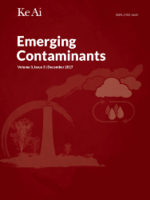
Emerging Contaminants
Connecting academia with practical environmental solutions.Emerging Contaminants is a leading international journal dedicated to the exploration and analysis of novel pollutants, their effects, and the methodologies for their detection and remediation. Published by KEAI PUBLISHING LTD in China, this Open Access journal has been at the forefront of scientific discourse since its inception in 2015, allowing unrestricted access to cutting-edge research. With an impressive categorization in the top Q1 quartile across diverse fields, including Health, Toxicology and Mutagenesis, and Public Health, it ranks remarkably high—41st out of 665 in Public Health and 10th out of 133 in Toxicology according to Scopus metrics, demonstrating its vital role in advancing our understanding of environmental health risks. By bridging the gap between academia and practical applications, Emerging Contaminants not only enriches the scientific community but also serves as an essential resource for policymakers and industry leaders seeking effective solutions to environmental challenges. Researchers, professionals, and students alike are encouraged to engage with the journal’s comprehensive studies and findings, contributing to a sustainable future.

ECOTOXICOLOGY
Bridging science and policy for environmental protection.ECOTOXICOLOGY is a prominent journal published by Springer, focusing on the interdisciplinary field of ecotoxicology—a critical area dedicated to understanding the impact of chemicals and pollutants on ecosystems and human health. Established in 1992, the journal has steadily gained recognition and currently holds a strong position in the academic landscape, featuring a Q2 ranking across multiple categories including Health, Toxicology and Mutagenesis, and Environmental Science. With its rigorous peer-review process and commitment to high-quality research, ECOTOXICOLOGY serves as an essential platform for disseminating innovative studies, systematic reviews, and policy analyses, thereby contributing significantly to environmental management and law. Although it does not offer open access, authors benefit from the reach and reputation of Springer, ensuring their work is seen by an engaged audience of researchers, professionals, and academics. As the field of ecotoxicology continues to evolve, ECOTOXICOLOGY remains at the forefront, addressing key challenges and solutions essential for safeguarding our environment and public health.

Chemosphere
Empowering researchers to tackle pressing environmental issues.Chemosphere is a prestigious peer-reviewed journal published by PERGAMON-ELSEVIER SCIENCE LTD, focusing on a wide array of critical topics in the fields of Chemistry, Environmental Science, and Public Health. Since its inception in 1972, the journal has become a vital platform for disseminating groundbreaking research, consistently ranking in the Q1 quartile across multiple categories, including Environmental Chemistry, Health, Toxicology and Mutagenesis, and Pollution. Its esteemed position is underlined by its impressive Scopus rankings, with significant placement in leading subsectors such as Environmental Science and Medicine. Although Chemosphere currently does not offer Open Access options, it remains a valuable resource for researchers and professionals seeking to advance their understanding of chemical interactions and their environmental impacts. The journal serves as an essential asset for students and academics alike, parsing complex issues of pollution, health, and toxicology while fostering inter-disciplinary approaches to remedy global challenges in environmental sustainability.
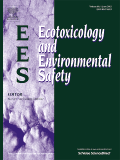
ECOTOXICOLOGY AND ENVIRONMENTAL SAFETY
Advancing knowledge at the intersection of toxicology and ecology.ECOTOXICOLOGY AND ENVIRONMENTAL SAFETY, published by Academic Press Inc. Elsevier Science, stands as a premier journal in the field of environmental science, specializing in the intricate relationships between toxic substances and ecological systems. With a commendable impact factor and recognized as a Q1 journal in various categories including Health, Toxicology and Mutagenesis, and Public Health, it consistently ranks among the top publications in Scopus, placing it in the 96th percentile for Medicine and Public Health. Established in 1977, this journal addresses critical issues related to environmental safety and pollution, making it an essential resource for researchers, professionals, and students alike. Although it does not offer an open access option, the journal’s commitment to publishing rigorous and impactful research makes it a vital platform for advancing the understanding of ecotoxicological risk assessments and environmental protection strategies. For those dedicated to the intersection of science and public health, ECOTOXICOLOGY AND ENVIRONMENTAL SAFETY serves as a beacon of knowledge and innovative research.
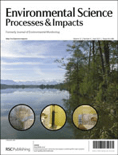
Environmental Science-Processes & Impacts
Unveiling the complexities of environmental interactions.Environmental Science-Processes & Impacts is a premier journal published by the Royal Society of Chemistry, focusing on critical research in the field of environmental science. With ISSN 2050-7887 and E-ISSN 2050-7895, this journal has established itself as an authoritative source of knowledge since its inception in 2012, maintaining a remarkable Q1 quartile ranking across significant categories such as Environmental Chemistry, Management, Monitoring, Policy and Law, Medicine, and Public Health for the year 2023. It stands as an essential resource for professionals, researchers, and students, aimed at advancing scientific understanding and solutions to pressing environmental issues. With impressive ranks in Scopus, including #45 in Public Health and #27 in Environmental Chemistry, the journal provides a platform for impactful research and interdisciplinary collaboration, emphasizing open access to foster the dissemination of knowledge globally. Join a community committed to exploring the interconnectedness of environmental processes and their implications for society by contributing to or learning from cutting-edge studies published in this esteemed journal.

ENVIRONMENTAL SCIENCE AND POLLUTION RESEARCH
Pioneering Research in Environmental ScienceEnvironmental Science and Pollution Research is a premier international journal published by Springer Heidelberg, dedicated to advancing knowledge in the field of environmental science and pollution. With an impressive impact factor reflecting its vital contributions to research, the journal is categorized in the top quartiles (Q1 and Q2) across several domains, including Health, Toxicology and Mutagenesis, and Environmental Chemistry. Established in 1994, it continues to be a critical resource for researchers, professionals, and students focusing on pressing environmental issues. The journal provides an insightful platform for disseminating significant findings related to pollution and its effects on health and the environment, contributing to a better understanding and resolution of these challenges. While it currently does not offer Open Access options, its inclusion in prominent rankings, such as the Scopus rankings, underscores its reputation and influence within the scientific community.

Journal of Xenobiotics
Shedding light on the effects of xenobiotics in our world.Journal of Xenobiotics, published by MDPI in Switzerland, is an esteemed open-access journal dedicated to advancing the understanding of xenobiotic substances and their impact on environmental health and biological systems. Since its inception in 2011, the journal has made significant strides in the field, earning a prestigious Q1 ranking across categories such as Pharmacology, Pollution, and Toxicology in 2023, showcasing its pivotal role in disseminating high-quality research. With its recent Scopus rankings reflecting a solid position in Environmental Science and Pharmacology disciplines, the journal serves as a vital platform for researchers, professionals, and students interested in the mechanisms and consequences of pollutants and toxic substances in various settings. The Journal of Xenobiotics continuously fosters open collaboration and knowledge exchange, allowing for inclusive dialogue on contemporary issues, making its articles readily accessible for the global scientific community.
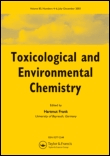
TOXICOLOGICAL AND ENVIRONMENTAL CHEMISTRY
Exploring the impacts of pollutants on our environment and well-being.TOXICOLOGICAL AND ENVIRONMENTAL CHEMISTRY is a pivotal journal published by Taylor & Francis Ltd, addressing critical intersections between environmental chemistry and toxicology since its inception in 1979. With its ISSN 0277-2248 and E-ISSN 1029-0486, the journal serves as a platform for rigorous research and innovative methodologies in pollution control, health implications of environmental chemicals, and the broader spectrum of toxicological studies. Although it currently does not offer open access, the journal's impact in the field is underscored by its Category Quartiles rankings in 2023, placing it in Q3 across Environmental Chemistry, Health, Toxicology and Mutagenesis, and Pollution categories. Furthermore, its Scopus rankings reveal its significant role within the scientific community, specifically in areas such as Environmental Science and Toxicology. The journal aspires to foster multidisciplinary dialogue and advance knowledge that contributes to environmental sustainability and public health, making it an essential resource for researchers, professionals, and students dedicated to these fields.
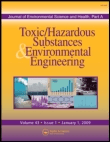
JOURNAL OF ENVIRONMENTAL SCIENCE AND HEALTH PART A-TOXIC/HAZARDOUS SUBSTANCES & ENVIRONMENTAL ENGINEERING
Unraveling the complexities of hazardous materials and public health.JOURNAL OF ENVIRONMENTAL SCIENCE AND HEALTH PART A-TOXIC/HAZARDOUS SUBSTANCES & ENVIRONMENTAL ENGINEERING, published by TAYLOR & FRANCIS INC, stands at the forefront of research in the dynamic fields of environmental science and public health. With an ISSN of 1093-4529 and an E-ISSN of 1532-4117, this journal serves as a pivotal platform for disseminating significant findings regarding toxic substances and their impact on the environment and human health. It is categorized in the Q3 quartile for both Environmental Engineering and Medicine in 2023, showcasing its relevance within these disciplines. Researchers will find valuable insights in the 90th rank among 197 in the Environmental Science and Engineering category, placing it in the 54th percentile among its peers. While access options remain traditional rather than open-access, the journal is dedicated to serving as an essential resource for professionals and academics engaged in understanding the intricate connections between hazardous materials and environmental safety. The journal has consistently published critical research since its inception in 1978 and is committed to advancing knowledge up to 2024, making it a crucial venue for ongoing discussions and developments in environmental health.
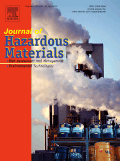
JOURNAL OF HAZARDOUS MATERIALS
Exploring the Frontiers of Hazardous Materials ManagementJOURNAL OF HAZARDOUS MATERIALS, published by Elsevier, stands as a leading academic platform in the fields of Environmental Chemistry, Environmental Engineering, and Pollution Studies. With a solid impact captured through its Q1 ranking across multiple relevant categories, this journal is essential for researchers focusing on the management and mitigation of hazardous materials. Originating in 1975 and continuing to present insight until 2024, it provides valuable peer-reviewed content that informs best practices within health, toxicology, mutagenesis, and waste management. Furthermore, its impressive Scopus rankings highlight its influence, securing a position in the top percentile among global publications. While access to the journal is not open access, its rigorous approach to impactful research makes it indispensable for academics, industry professionals, and students seeking to deepen their understanding and innovate in this critical area of study.